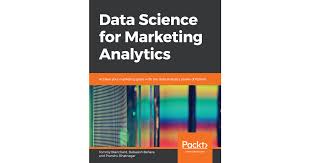Crafting a White Paper on Becoming a Data Scientist
Here's a proposed structure for your white paper, along with suggestions for references from books, industry, and trade publications:
1. Introduction
- What is Data Science? Define data science, its key components (statistics, machine learning, programming), and its applications in various industries.
- The Role of a Data Scientist: Describe the typical roles and responsibilities of a data scientist, including data cleaning, analysis, modeling, and visualization.
- Why Become a Data Scientist? Discuss the increasing demand for data scientists, the potential for high-paying jobs, and the opportunity to contribute to innovative solutions.
2. Essential Skills and Knowledge
- Programming Languages:
- Python: A versatile language for data science, machine learning, and data analysis.
- R: A statistical programming language widely used for data analysis and visualization.
- SQL: Essential for working with relational databases.
- Mathematics and Statistics:
- Linear Algebra: Fundamental for understanding machine learning algorithms.
- Probability and Statistics: Key for data analysis and modeling.
- Calculus: Useful for optimization algorithms and machine learning.
- Machine Learning:
- Supervised Learning: Techniques like linear regression, logistic regression, decision trees, and random forests.
- Unsupervised Learning: Techniques like clustering and dimensionality reduction.
- Deep Learning: Neural networks and their applications in various domains.
- Data Analysis and Visualization:
- Data Cleaning and Preparation: Techniques for handling missing data, outliers, and inconsistencies.
- Exploratory Data Analysis (EDA): Visualizing data to uncover patterns and insights.
- Data Visualization Tools: Libraries like Matplotlib, Seaborn, and Plotly for creating informative visualizations.
3. Educational Paths
- Formal Education:
- Undergraduate and graduate degrees in computer science, statistics, mathematics, or data science.
- Specialized data science programs offered by universities and institutions.
- Self-Learning and Online Courses:
- Online Platforms: Coursera, edX, Udacity, and DataCamp offer a wide range of data science courses.
- MOOCs: Massive Open Online Courses provide flexible learning opportunities.
- Online Tutorials and Books: Resources like "Hands-On Machine Learning with Scikit-Learn, Keras, and TensorFlow" by Aurélien Géron and "Python Data Science Handbook" by Jake VanderPlas.
4. Building a Strong Portfolio
- Personal Projects:
- Kaggle Competitions: Participate in data science competitions to practice and learn from others.
- GitHub Repositories: Share your code and projects on GitHub to showcase your skills.
- Data Science Blogs: Write about your experiences and insights to build a personal brand.
5. Career Paths and Industry Trends
- Data Scientist Roles:
- Data Analyst: Focuses on data cleaning, preparation, and analysis.
- Machine Learning Engineer: Develops and deploys machine learning models.
- Data Engineer: Builds and maintains data pipelines and infrastructure.
- Industry Trends:
- AI and Machine Learning: The increasing adoption of AI and ML in various industries.
- Big Data: The challenges and opportunities of working with large datasets.
- Cloud Computing: The role of cloud platforms like AWS, Azure, and GCP in data science.
6. Conclusion
- Recap of Key Points: Summarize the essential skills, educational paths, and career opportunities for data scientists.
- Call to Action: Encourage readers to start their journey towards becoming a data scientist.
References
- Books:
- "Hands-On Machine Learning with Scikit-Learn, Keras, and TensorFlow" by Aurélien Géron
- "Python Data Science Handbook" by Jake VanderPlas
- "Introduction to Statistical Learning" by Gareth James, Daniela Witten, Trevor Hastie, and Robert Tibshirani
- Industry and Trade Publications:
- Harvard Business Review
- MIT Sloan Management Review
- McKinsey Quarterly
- Forbes
- Wired
- IEEE Computer Society
- ACM SIGKDD Explorations Newsletter
Remember to cite your references properly using a style like APA or MLA.
By following this structure and incorporating references from reputable sources, you can create a comprehensive white paper that provides valuable insights into the world of data science.



